Best concrete cleaner: 5 standout products for a refresh
Invest in the best concrete cleaner and refresh your front or back yard with ease, whilst on a budget

Lindsey Davis
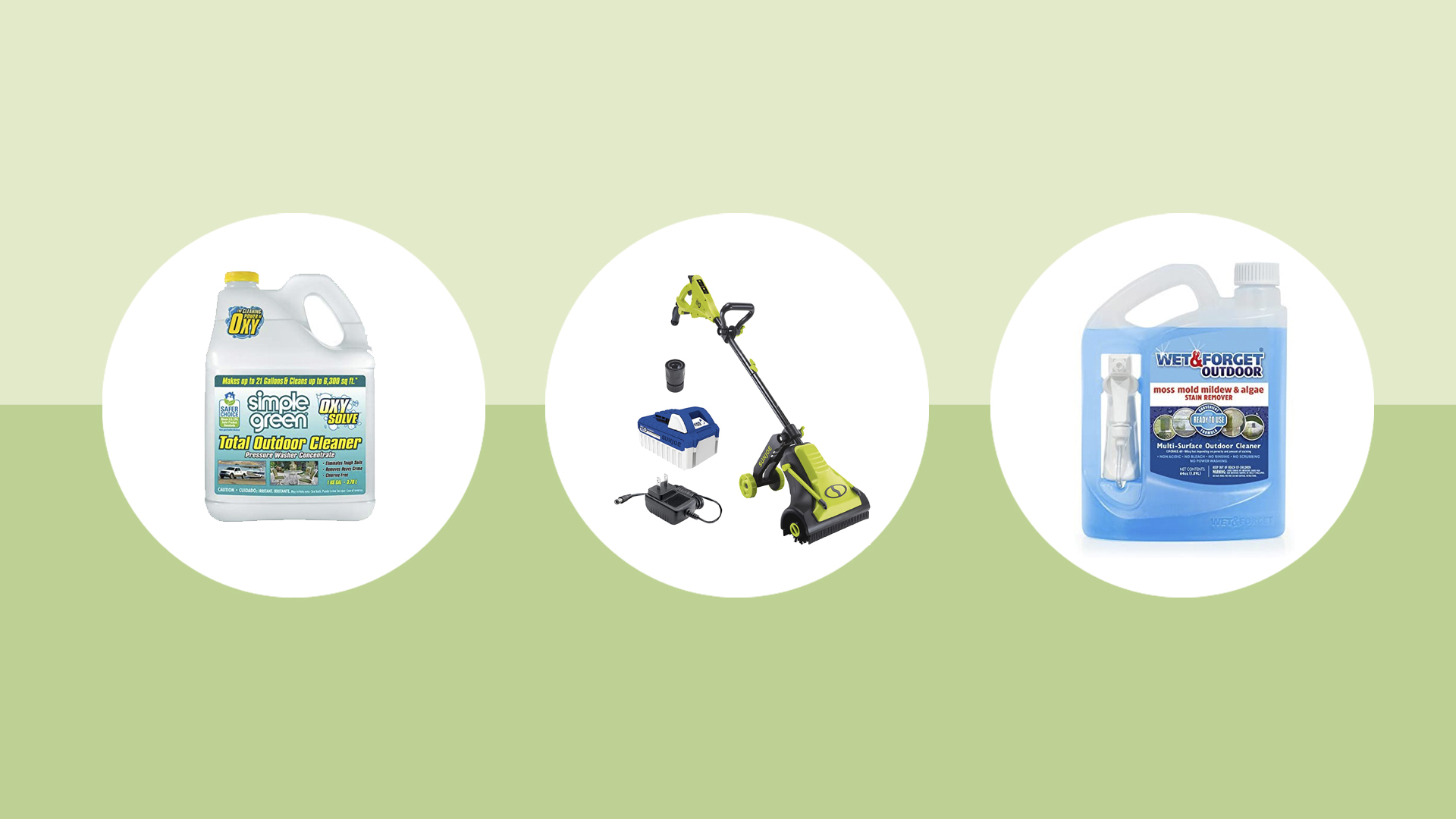
On the hunt for the best concrete cleaner to use in your yard, front or back? Whether you need it for your worse-for-wear patio slabs, your old driveway, some dirty decking or even to brighten an outdoor ornament, we can help. An easy (and affordable) way to rescue your outdoor space without having to invest in the best pressure washer, concrete cleaners are super convenient with no hose connection required.
Much to our yard's pleasure, we've been working to test a range of concrete cleaners to determine which one is really worth your money. Some concrete cleaners will need to be diluted with water, and others are ready to pour straight on. If you're in need of a quick fix, then go for a fast-acting solution as some solutions take weeks to work and slowly show results over months.
Be sure to check the weather forecast before applying your new concrete cleaner, too. If rain is forecast, hold off. Similarly, don't apply the concrete cleaner in the middle of the day if the sun is shining, instead, wait until the evening.
Here's our verdict to help keep your patio (and more) gleaming all year round, for a cheap price.
The best concrete cleaners to buy in 2025
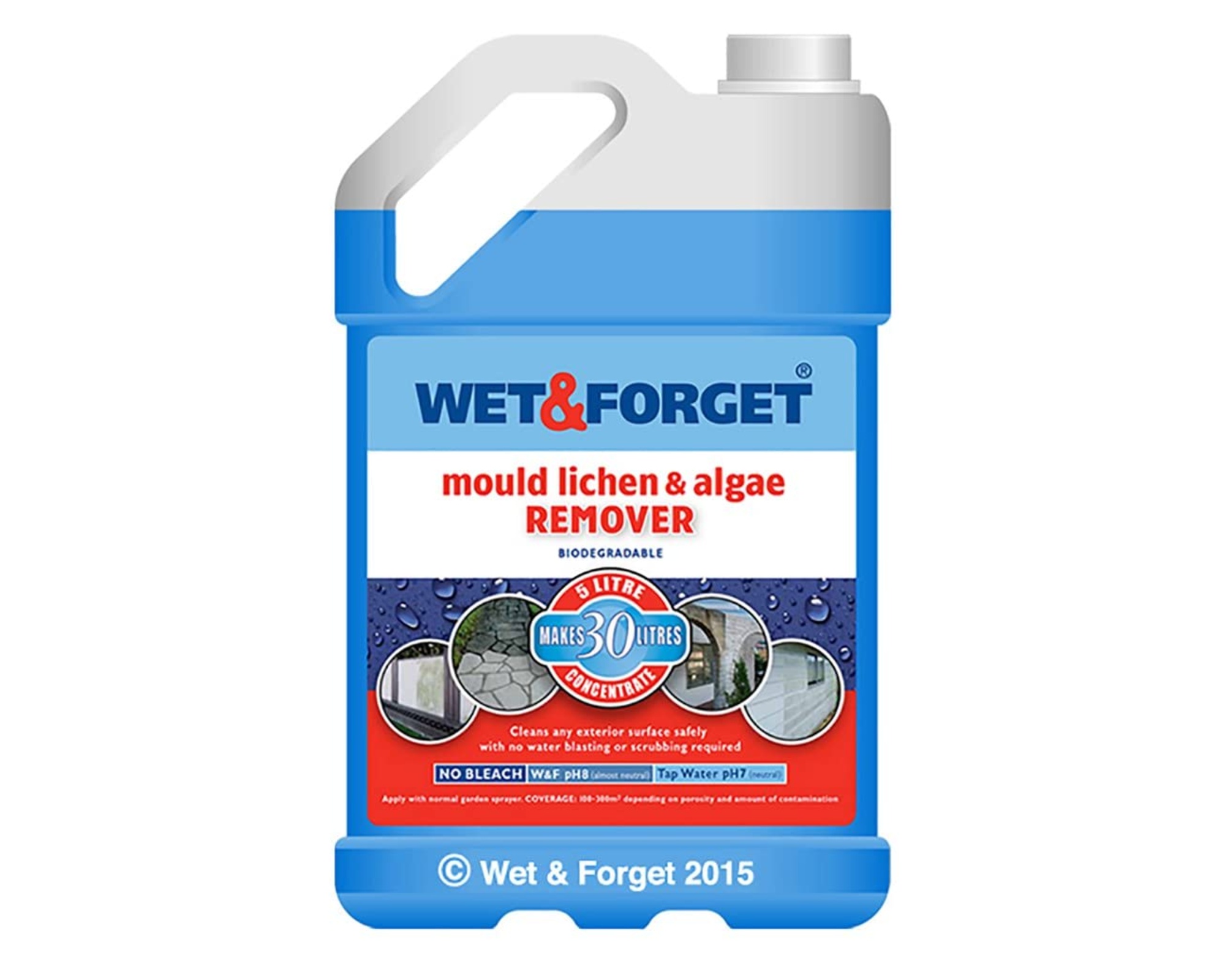

1. Wet & Forget Moss Mould Lichen & Algae Remover
Our expert review:
Specifications
Reasons to buy
Reasons to avoid
As the name suggests, you just mix this product, pour over the desired surface and forget about it. And you probably really will forget, as you won't get instant results with this one. They say the worst contamination could take six to 12 months, so not one for those wanting instant results, but a long-term solution.
Application
Lindsey tested this concrete cleaner for us. She mixed one part to five parts water and poured it over the surface from a bucket (you can also use a watering can). As per instructions, you then leave it to work (for up to a year!).
Coverage
A 64fl.oz pack will give you up to 300m² coverage, so while it is the most expensive, it goes a long way.
Results
It was very easy to apply and Lindsey left it to do its work. There was no change for about a week, but from there the surface looked brighter and cleaner with no visible moss. It still looks like it needs a scrub, but the product works over much longer times to prevent regrowth so we will give it the benefit of the doubt and persevere. Lichen is reduced but not gone, though it does seem to have been slightly effective at the moment. For the complete lack of effort on our part, and the fact it has good results in two weeks, we are giving this 4.5 stars. It would get more, but as it could take much longer for good results, most people will prefer a quicker solution,
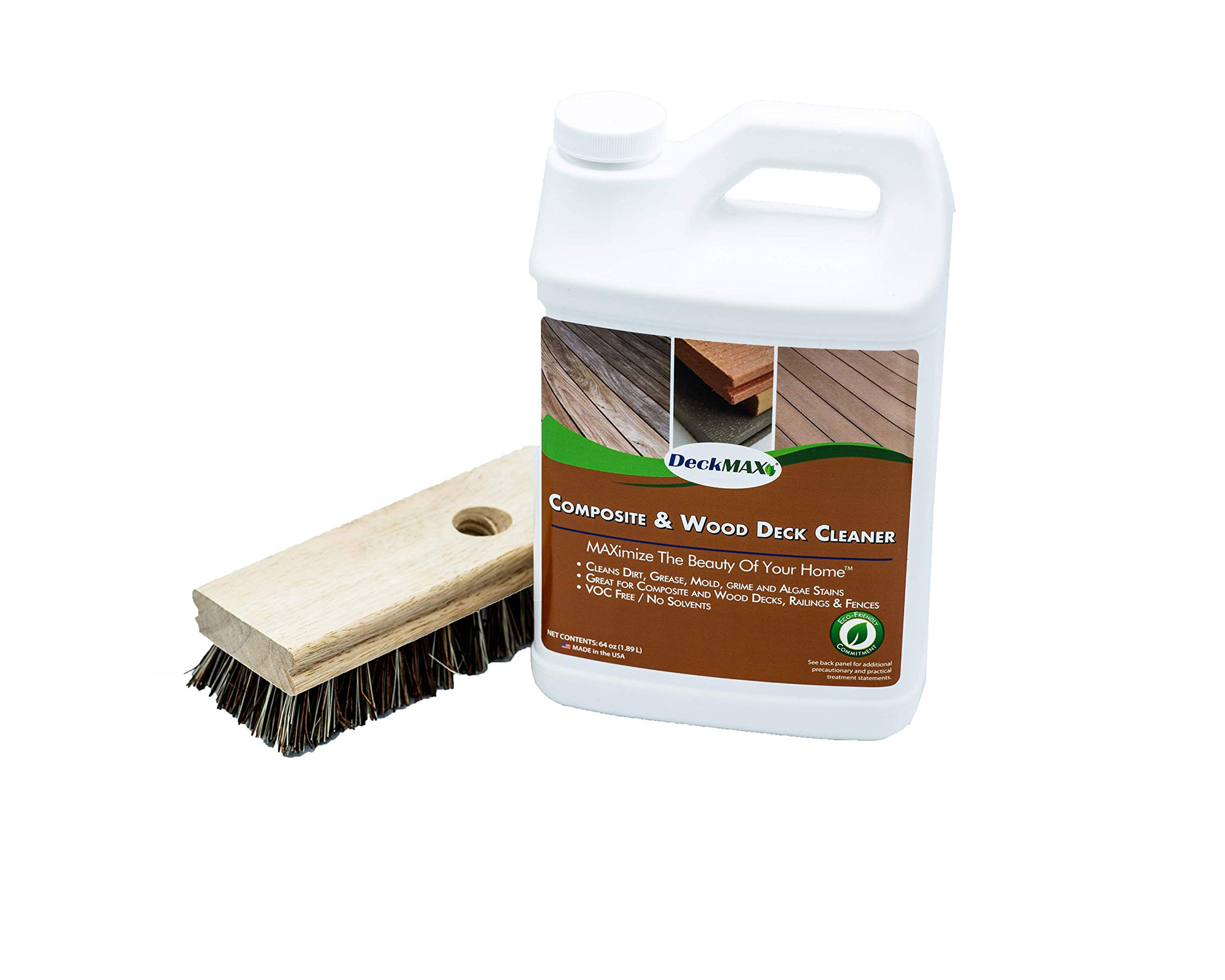
2. DeckMAX Concentrated Composite & Wood Deck Cleaner Kit
Specifications
Reasons to buy
Reasons to avoid
Remove black and green stains as well as dirt and grease from your wooden or composite porch and decking with the DeckMAX Concentrated Composite & Wood Deck Cleaner Kit.
Application
After wetting the wood or composite deck, spray the area with the diluted deck cleaning solution (a portable sprayer is a good tool to help with this). Then either use the natural bristle brush that comes included with the kit (and a little elbow grease), or let the solution sit for two minutes before power washing your porch clean.
If your deck is painted, just make sure to test the DeckMAX Concentrated Cleaner on a small area first to make sure that scrubbing or power washing with the solution won’t remove the paint.
Coverage
The concentrated formula needs diluting before use, but this makes for a generous 1,500 square feet of coverage that's suitable for use on Timbertech, Trex, Fiberon, or any other type of composite or wood decking.
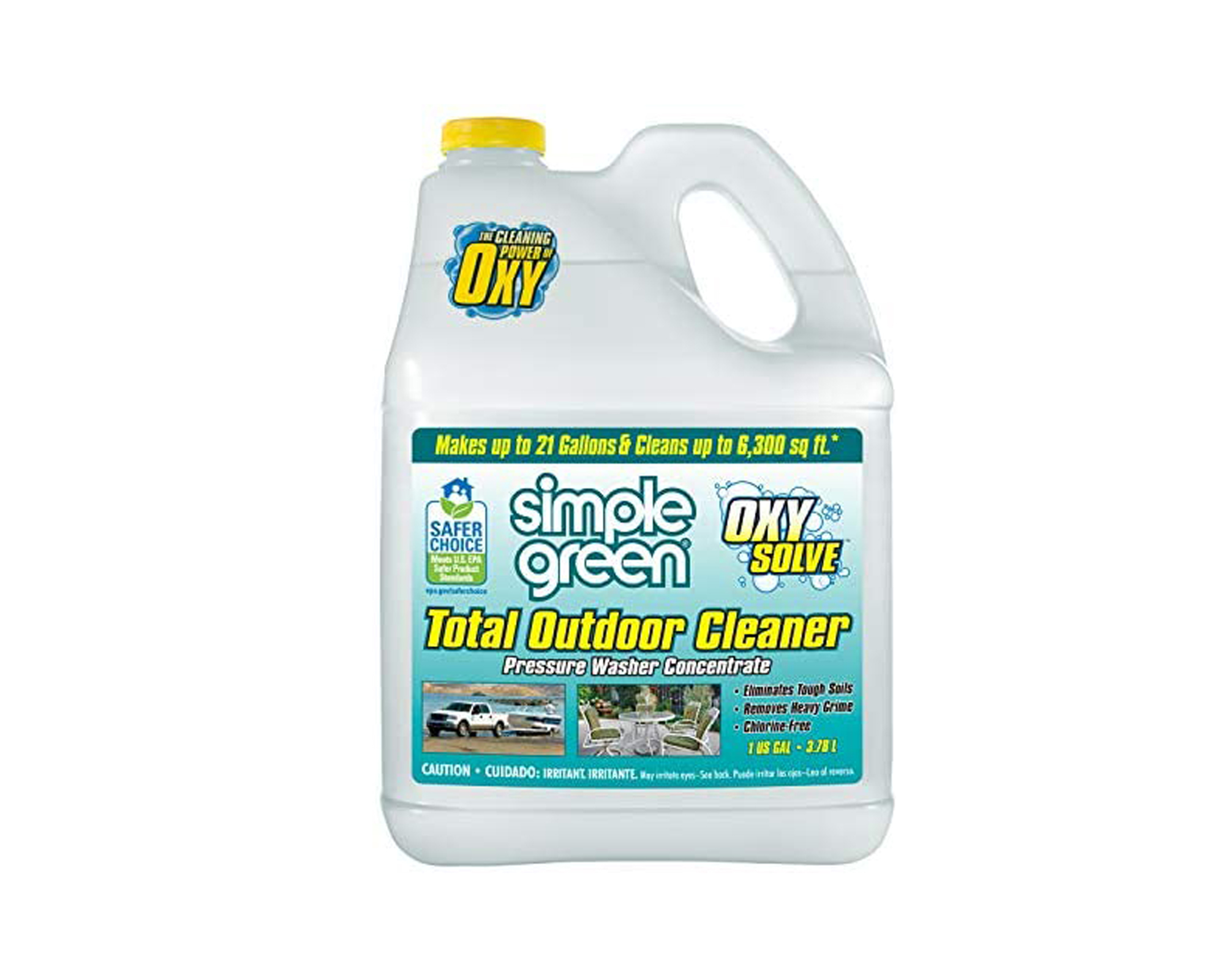
3. Oxy Solve Total Outdoor Pressure Washer Cleaner
Specifications
Reasons to buy
Reasons to avoid
Maximize your pressure washer’s cleaning capability by using Oxy Solve Total Outdoor Pressure Washer Cleaner. This solution can help wash away dirt, grime, mold, mildew, moss, and algae from a wide range of outdoor surfaces making it a great all-rounder for backyard cleaning.
Application
To use, start by completely saturating your porch with plain water on a low-pressure washer setting. Depending on your pressure washer, you can then pour the Oxy Solve cleaner directly into the jet washers' soap reservoir or hook it up to the pressure washer with a siphon tube. Use the low setting once more to cover the patio or porch with the cleaning fluid, wait three to five minutes to let the Oxy’s peroxide fighting power attack the grime, mold, and mildew, and then wash away with water on a high-pressure setting.
Coverage
One bottle of this solution can cover up to 6,300 square feet.
Good to know
Safe to use on concrete, brick, wood, composite, plastic, wicker, vinyl, metal, or asphalt, it can give your patio furniture or boat a makeover as well as your hard landscaping.
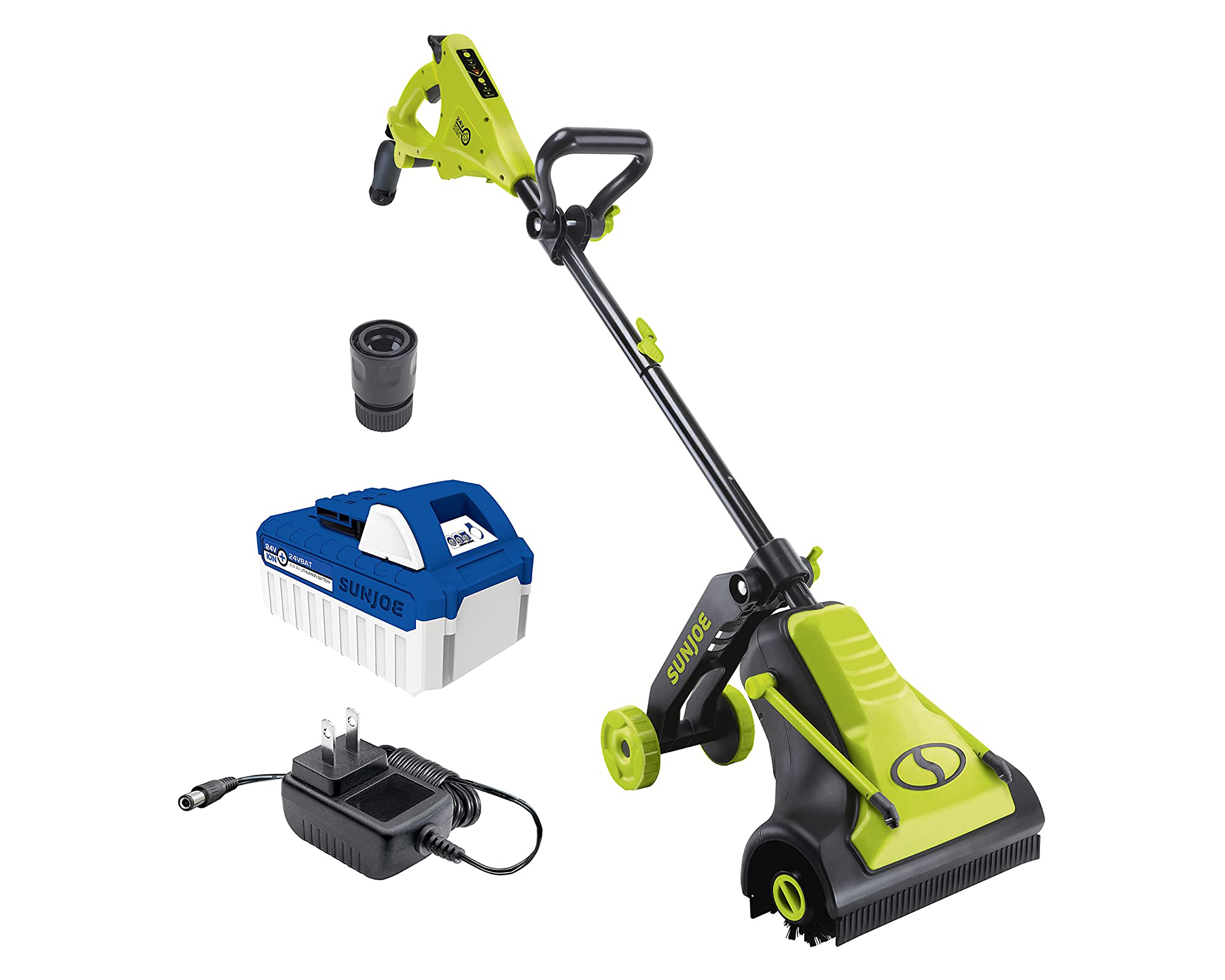
4. Sun Joe 24-Volt iON+ Cordless Patio Cleaner Kit with Battery + Charger
Specifications
Reasons to buy
Reasons to avoid
If you'd rather avoid using chemicals in your backyard then Sun Joe's 24-Volt iON+ Cordless Kit offers an alternative way to get your hard landscaping clean.
Application
This motorized cleaning tool is designed to take the elbow grease out of patio cleaning. Simply hook your water hose to the concrete cleaner and water is sprayed through two adjustable nozzles on the front of the tool whilst two rotating nylon-bristled brushes scrub away at stubborn dirt as you move the kit across your patio.
Cordless for easy maneuvering and powered by an energy-saving 500-watt motor, the rechargeable battery allows up to 40 minutes of running time. A mud flap is also fitted to prevent splashback and there are two different cleaning speeds on offer for tougher dirt.
Coverage
There's no maximum with this one, it all depends on how much you can do in one charge which is 40 minutes.
Good to know
The initial outlay of this cleaner is definitely more expensive than buying a bottle of patio cleaning fluid, but, if you want an option that avoids the chemicals which are harmful to wildlife, plants, and pets (and want to avoid manual scrubbing), then this option could be worth the investment.
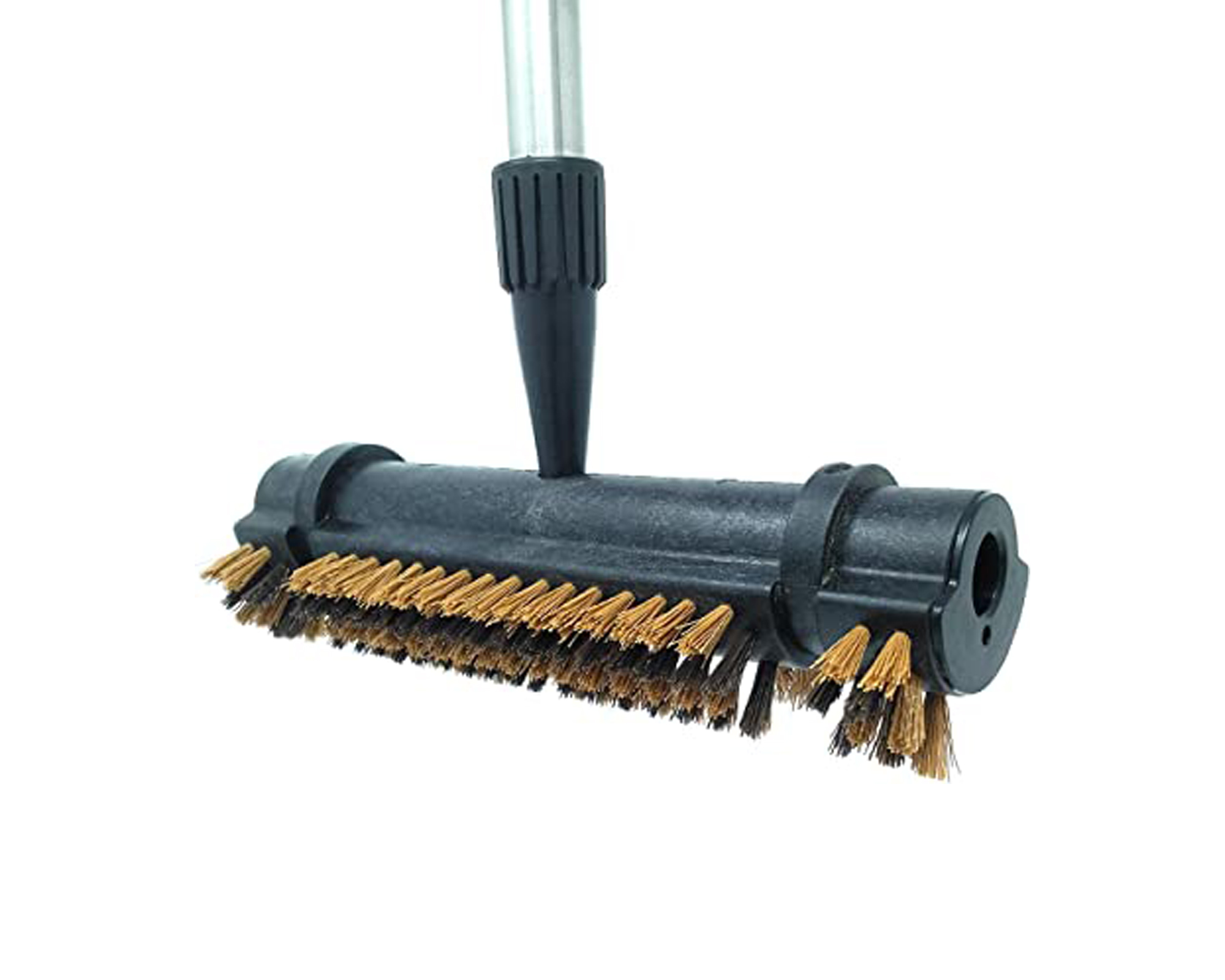
5. Cleanovation Deck Detailer Deck Brush
Specifications
Reasons to buy
Reasons to avoid
If you want an affordable and chemical-free solution to cleaning your porch or decking, then the Deck Detailer Deck Brush makes doing things the 'old-fashioned' way as hassle-free as possible.
Application
It makes a great accompaniment to outdoor cleaning fluid, so you could pair it with either our number 1 or 2 picks. Its bristles are designed specifically to get into those tough-to-reach gaps between wooden planks or cement expansion joints to allow you to tackle built-up dirt. Elbow grease is required, though the rust-resistant stainless steel telescopic handle makes things as easy as possible with a height-adjustable pole that allows you to stand and clean your patio or deck surface instead of getting on your knees.
Coverage
You can use this to clean as much of your outdoor space as you like – until your arms or legs get tired, that is.
Good to know
As well as being kinder to wildlife and plants, with this option you get a clean backyard and a 'home gym workout' in one – what's not to love?!
Browse more concrete cleaners...
If you're still looking for the perfect cleaner for your backyard, these are the retailers we would recommend heading to first to find your match:
How often should you use a concrete cleaner?
You should use a concrete cleaner twice a year, in most cases. Although some people will suggest cleaning your patio once a year, twice-yearly cleanings can be much better as it prevents so much grime from building up and makes dirt removal easier. There are plenty of tips on how to clean a patio in our expert guide.
Consider giving your backyard a once-over at the start of spring to remove winter debris and ensure your patio looks top-notch for when the summer season rolls around, and then do another clean at the end of fall when most of the leaves have fallen from the trees.
Removing leaf debris and using it to mulch your flower beds is a bonus for your planting, as well as avoiding mildew and algae build-up on damp decking.
How to choose a concrete cleaner?
There are a few things to think about before you hit check out on your new concrete cleaner, to ensure you're getting the right product for the job. That starts with whether you want a solution you can use with a pressure washer, or whether you would prefer to get stuck in without one. After that, these are the main things you should bear in mind before you make that all important cleaning transformation to your backyard.
Always test a solution first
Before use always make sure to test a patio cleaning solution in a small hidden section of your front porch or backyard. This is especially important for painted or wooden porches, though it’s a smart thing to do with other patios materials too. After all, you wouldn’t want to stain your porch because you didn’t take the time to test a small area.
Think about the product you're using
Painted porches can be more fragile than non-painted porches when it comes to applying cleaning solutions, with some even removing certain types of paint, or causing them to crack and peel. Be mindful of the products you're using on anything that's painted in order to prevent damage.
Consider the chemical impact
When cleaning a patio or porch with a cleaning solution, there will inevitably be water runoff. Some cleaning solutions can have toxic chemicals that can harm the ecosystem of nearby soil and water sources, kill wildlife, or bleach your yard, as well as potentially being harmful to children and pets. Always read the product label to see which cleaning solution is most suitable for the environment, wear protective clothing if advised, and take care to use harmful chemicals responsibly.
How we chose these concrete cleaners
We haven't had a chance to test out all of these concrete cleaners just yet, but we have looked carefully at what we believe consumers need when they are purchasing this kind of product in order to bring you this roundup. That includes looking at exactly which range of cleaners need to be included, from wood cleaners to concrete cleaners, as well as the chemicals used in each. We've also looked carefully at user reviews to get the full picture from those who have used these products firsthand within their homes.
The one concrete cleaner on this list that we have tested was the Wet & Forget one.

Molly is the Ecommerce Writer for Gardeningetc and spends her time searching the internet for the next best thing for your garden. When she's not writing, she would most like to be swimming in the nearest sea/ocean or getting through her neverending pile of novels. She's a huge fan of houseplants and loves identifying new plants and trees on walks too.
- Lindsey DavisEditor in Chief, Homes Ecommerce
